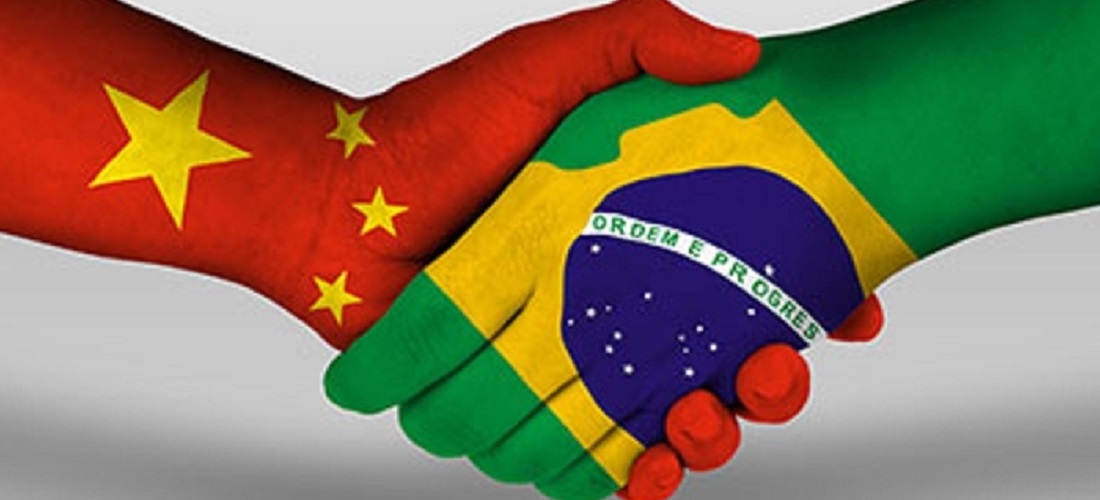
Brazilian agribusiness exports to China rising steadily
Oct, 21, 2020 Posted by Ruth HollardWeek 202044
A recent study by DEAGRO, the agribusiness division of the Federation of Industries of São Paulo (FIESP), pointed out that China, the main destination for Brazilian agribusiness exports, continues in this position, given its economic growth and its demand for food of its gigantic population. But Brazil cannot bet all its chips on the Asian country without running the risk of seeing its bargaining power decrease and losing markets in important countries and regions in order to maintain the growing and diversified trade agenda.
Based on the evolution of shipments from the sector to China, the European Union, and the United States between 2009 and 2019, the study highlights not only the surge in sales to China and the growing dependence on Brazilian production chains such as soybeans in the Asian market but also highlights the slow advance of sales to the USA and the drop in the value of shipments to the European Union during the last decade.
The USA and the EU are fundamental markets for food exporters like Brazil, due to their high phytosanitary requirements and the wide consumption of products with more added value. For other countries, they often function as business cards that make the procedures of the necessary protocols more agile to make agricultural trade viable. That is why good relations with these partners tend to open other doors.
“We are concerned to see an increasing concentration on exports to China, and on a few products,” says Roberto Betancourt, director of DEAGRO. The study points out that according to 2009 data from SECEX, the Foreign Trade Secretariat, Brazilian agribusiness shipments to China generated US$ 8.9 billion, or 15% of the sector total. In 2019, sales totaled US$ 31 billion, almost 250% more, and China received 32% of Brazilian exports. In the 12-month interval between August last year and last July, this number increased to 33%, or US$ 71.3 billion.
Soy and pulp were the most common shipments to China in 2009 and demand remained high in 2019. But there was an important change in the sales profile with the growth in shipments of beef, chicken, and pork, which are products with higher added value.
“In recent years, geopolitics has also benefited Brazil in China because of the trade disputes between Beijing and Washington, but, on the other hand, it has hurt us in the EU,” noted Betancourt. He refers, of course, to the constant European criticism regarding environmental problems in Brazil, which can also serve as a pretext for protectionist barriers.
In 2009, Brazilian agribusiness exports to the EU reached US$ 19.1 billion, or 30% of the sector total, and last year the value dropped to US$ 16.8 billion, or 17.3%. “It is true that Europe is getting complicated and that there are countries that we can access more easily. But it is necessary to have balance and the European market cannot be left aside ”, says the Director of FIESP He recognizes that the agreement between Mercosur and the European bloc can help to stop the bleeding, but, in general, he defends the negotiation of a greater number of bilateral agreements.
Betancourt notes that even in the USA, a competitor of Brazil in markets such as grains and meats, there is still a great potential to be explored with specific agreements. “The US imports $ 20 billion a year in fruit, for example, and our share of that is close to zero.”
Consult the following chart for exports from Brazil to the USA, European Union and China from 2009:
Brazilian exports to the USA, EU and China | Jan 2009 to Aug 2020 | WTMT
Graph source: DataLiner (To request a DataLiner demo click here)
Source: Valor Econômico
-
Grains
Oct, 19, 2021
0
Ministry of Agriculture investigates new Asian insect in Santos
-
Shipping
Jul, 28, 2023
0
Liberia replaces Panama as the world’s largest flag
-
Trade Regulations
Oct, 11, 2021
0
Brazil and Colombia discuss increasing bilateral trade
-
Feb, 19, 2025
0
Brazil’s Waterborne Cargo Throughput Hits Record High of 1.32 Billion Tonnes in 2024

